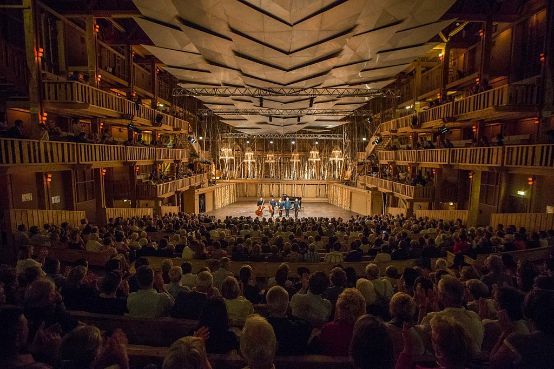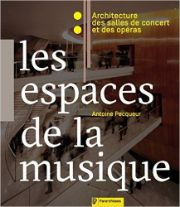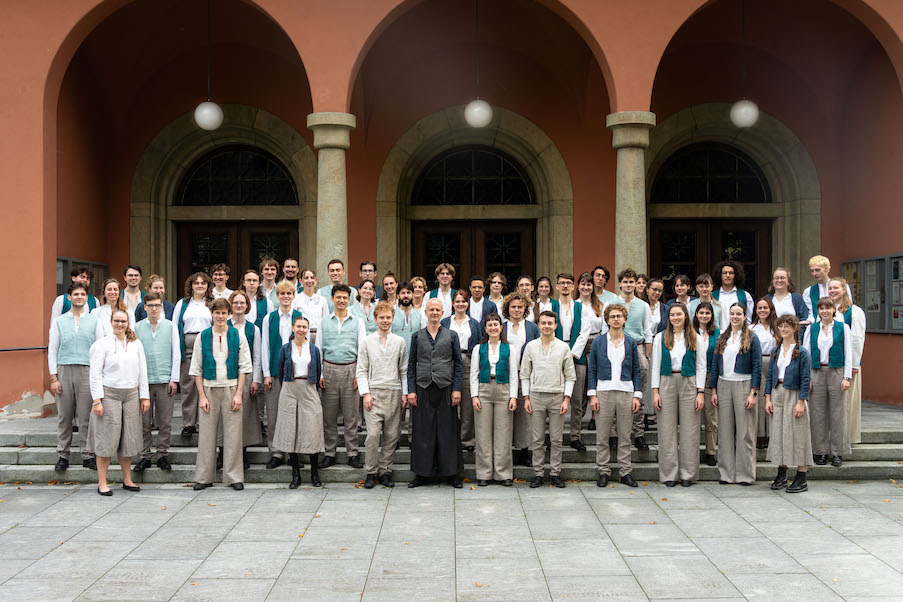The architecture of music venues
This lavishly illustrated book invites you to discover the architecture of concert halls and opera houses, in particular through 30 contemporary projects.

Illustrated with over 340 photographs and 200 plans, sections, axonometries and sketches, Antoine Pecqueur's book begins with a historical overview of the architecture of opera houses, symphonic concert halls and chamber music halls. Buildings dedicated to the lyric art were constructed in Italy as early as the early 17th century, while the first halls specifically devoted to public concerts appeared in England a few decades later. After a long period of empiricism, with its failures and successes, it wasn't until the 20th century that an acoustician collaborated with an architect for the first time, on the Boston Symphony Hall, inaugurated in 1900. A third important figure, the (often overlooked) scenographer, would later make his contribution. In other words, the design of such buildings can often be a conflicting affair, with each party having its own vision and requirements. Nevertheless, the construction of one of these temples to music is experienced as a consecration by many architects. In addition to interviews with eight of these architects, short chapters cover the renovation and conversion of concert halls, conservatory auditoriums, open-air concert spaces, ecological aspects (construction, heating, public transport, etc.) and, in particular, recent developments in the field.) and, in particular, recent developments in architecture, with brief descriptions of important, exceptional, revolutionary halls (such as the Berlin Philharmonic) or, on the contrary, unsuccessful ones (the Chicago Auditorium), as well as new trends, in particular the new impetus given by emerging countries.
But the most developed part of the book is devoted to the detailed presentation of 30 emblematic halls built over the last three decades, such as the KKL, the Oslo Opera House, the Grange au Lac d'Evian or the recent Philharmonies de Paris and de l'Elbe in Hamburg, by architects such as Norman Foster, Frank Gehry, Zaha Hadid, Herzog & de Meuron, Oscar Niemeyer, Jean Nouvel or Renzo Piano (list of the 30 halls: see below). Their description reveals their strong points without glossing over their shortcomings (dry or over-reverberant acoustics, cramped or anxiety-inducing spaces, insulation problems...) and includes both the circumstances in which the construction was carried out and, for example, the question of accessibility and comfort for its users, musicians and listeners.
-

National Center for Performing Arts, Beijing. Photo: Carlos Adampol Galindo/wikimedia commons
List of rooms, with name of architect or architectural firm
Aalborg, Musikkens Hus (Coop Himmelb(l)au)
Aix-en-Provence, Grand Théâtre de Provence (Vittorio Gregotti)
Baden-Baden, Festspielhaus (Wilhelm Holzbauer)
Bruges, Concertgebouw (Paul Robbrecht and Hilde Daem)
Copenhagen, Koncerthuset (Jean Nouvel)
Copenhagen, Opera (Henning Larsen)
Dallas, Meyerson Symphony Center (Ieoh Ming Pei)
Dijon, Auditorium (Arquitectonica)
Évian, La Grange au Lac (Patrick Bouchain)
Guangzhou, Opera (Zaha Hadid)
Hamburg, Elbe Philharmonic (Herzog & de Meuron)
Kyoto, Concert Hall (Arata Isozaki)
Los Angeles, Walt Disney Concert Hall (Frank Gehry)
Lucerne, KKL (Jean Nouvel)
Luxembourg, Philharmonie (Christian de Portzamparc)
Lyon, Opéra national (Jean Nouvel)
Metz, Arsenal (Ricardo Bofill)
Newcastle Gateshead, The Sage (Norman Foster)
Oslo, Opera (Snøhetta)
Paris, Philharmonie (Jean Nouvel)
Parma, Auditorium Niccolò-Paganini (Renzo Piano)
Beijing, National Center for Performing Arts (Paul Andreu)
Poitiers, Théâtre-auditorium (João Luís Carrilho da Graça)
Porto, Casa da musica (Rem Koolhaas)
Potsdam, Nicolaisaal (Rudy Ricciotti)
Ravello, Auditorium Oscar Niemeyer (Oscar Niemeyer)
Rio de Janeiro, Cidade das Artes (Christian de Portzamparc)
Rome, Auditorium Parco della Musica (Renzo Piano)
San Sebastian, Kursaal (Rafael Moneo)
Valencia, Palau de les Arts Reina Sofia (Santiago Calatrava)
-

La Grange au Lac, Evian. Photo: Evian Resort / wikimedia commons
Antoine Pecqueur, Les espaces de la musique, Architecture des salles de concert et des opéras, 288 p., 550 ill. in color, € 36.00, Coédition Philharmonie de Paris, Éditions parenthèses, Marseille 2015, ISBN 978-2-86364-307-5









